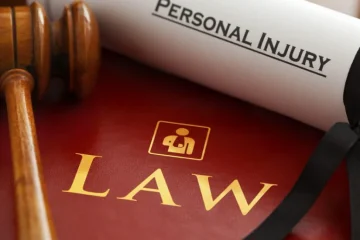Losing a loved one is an incredibly painful experience, and it becomes even more heart-wrenching when their death is a result of someone else’s negligence or misconduct. In such cases, pursuing a wrongful death lawyer can be a way to seek justice and financial compensation. However, the legal process can seem overwhelming. This guide outlines the key steps involved in filing a wrongful death lawsuit.
What is a Wrongful Death Claim?
A wrongful death claim occurs when a person dies as a direct result of the negligent, reckless, or intentional actions of another party. The goal of these claims is to compensate the surviving family members for their financial and emotional losses, which may include funeral expenses, lost income, and the loss of companionship.
Step 1: Identify Eligible Parties to File the Lawsuit
The first step is to figure out who is legally allowed to file a wrongful death lawsuit. Typically, the following individuals may be eligible:
– Immediate family members (such as spouses, children, and parents)
– Life partners, financial dependents, and potential spouses
– Extended family members (like siblings and grandparents) in some jurisdictions
– Representatives of the deceased person’s estate
It’s important to note that state laws can vary on who is eligible, so consulting with a wrongful death attorney can help clarify your state’s specific requirements.
Step 2: Consult with a Wrongful Death Attorney
It’s crucial to work with a knowledgeable wrongful death attorney. They can help you understand your rights, gather the necessary evidence, and build a strong case. During your initial consultation, provide your attorney with all relevant information about the incident, including:
– Medical records
– Police and accident reports
– Statements from witnesses
– Financial documents
An experienced attorney will evaluate your case and guide you through the legal process, ensuring your rights are protected.
Step 3: Conduct a Thorough Investigation
Your attorney will carry out a detailed investigation to gather evidence that supports your claim. This may involve:
– Interviewing witnesses
– Reviewing medical and autopsy records
– Analyzing accident reports and photographic evidence
– Consulting with experts (such as medical professionals or accident reconstruction specialists)
The aim is to establish liability and prove that the defendant’s actions directly led to your loved one’s death.
Step 4: Assess Damages
Determining the value of a wrongful death claim involves calculating both economic and non-economic damages. Economic damages may include:
– Funeral and burial expenses
– Medical bills before death
– Lost wages and benefits
– Loss of inheritance
Non-economic damages, although more difficult to quantify, are still significant and may include:
– Pain and suffering
– Loss of companionship and emotional support
– Loss of consortium (for spouses)
Your attorney will assist you in accurately assessing these damages to ensure you seek the appropriate compensation.
Step 5: File the Complaint
Once evidence and damages have been assessed, your attorney will prepare and file a formal complaint with the court. This document outlines the facts of the case, the legal basis for the lawsuit, and the compensation sought. After filing, the defendant will be served with a copy of the complaint and given a deadline to respond.
Step 6: Pretrial Procedures
Several pretrial procedures may occur before the case proceeds to trial, including:
- Discovery: This involves both parties exchanging relevant information and evidence through depositions, interrogatories, and document requests.
- Motions: Either party can file motions to address specific issues before trial, such as motions to dismiss the case or motions for summary judgment.
- Settlement Negotiations: Many wrongful death cases are settled out of court. Your attorney will negotiate with the defendant’s legal team to secure a fair settlement. Should an agreement be reached, the case will not proceed to trial.
Step 7: Trial
Should a settlement not be achieved, the case will proceed to trial. During the trial, each side presents their evidence and arguments to a judge or jury. Your attorney will:
– Deliver opening statements
– Call witnesses and experts for testimony
– Cross-examine the defendant’s witnesses
– Present closing arguments
The judge or jury will then deliberate and issue a verdict. If successful, the court will determine the compensation to be awarded.
Step 8: Post-Trial Motions and Appeals
Following the trial, either party may file post-trial motions to contest the verdict or request a new trial. Should there be legal errors during the trial, an appeal may be pursued. An appellate court will review the case and may uphold the original verdict, reverse it, or order a new trial.
Conclusion
Filing a wrongful death lawsuit is a complex and emotionally challenging process, yet it can offer a sense of justice and financial compensation for surviving family members. By understanding the necessary steps and working with an experienced wrongful death attorney, you can navigate this difficult journey and seek the compensation your family rightfully deserves.



